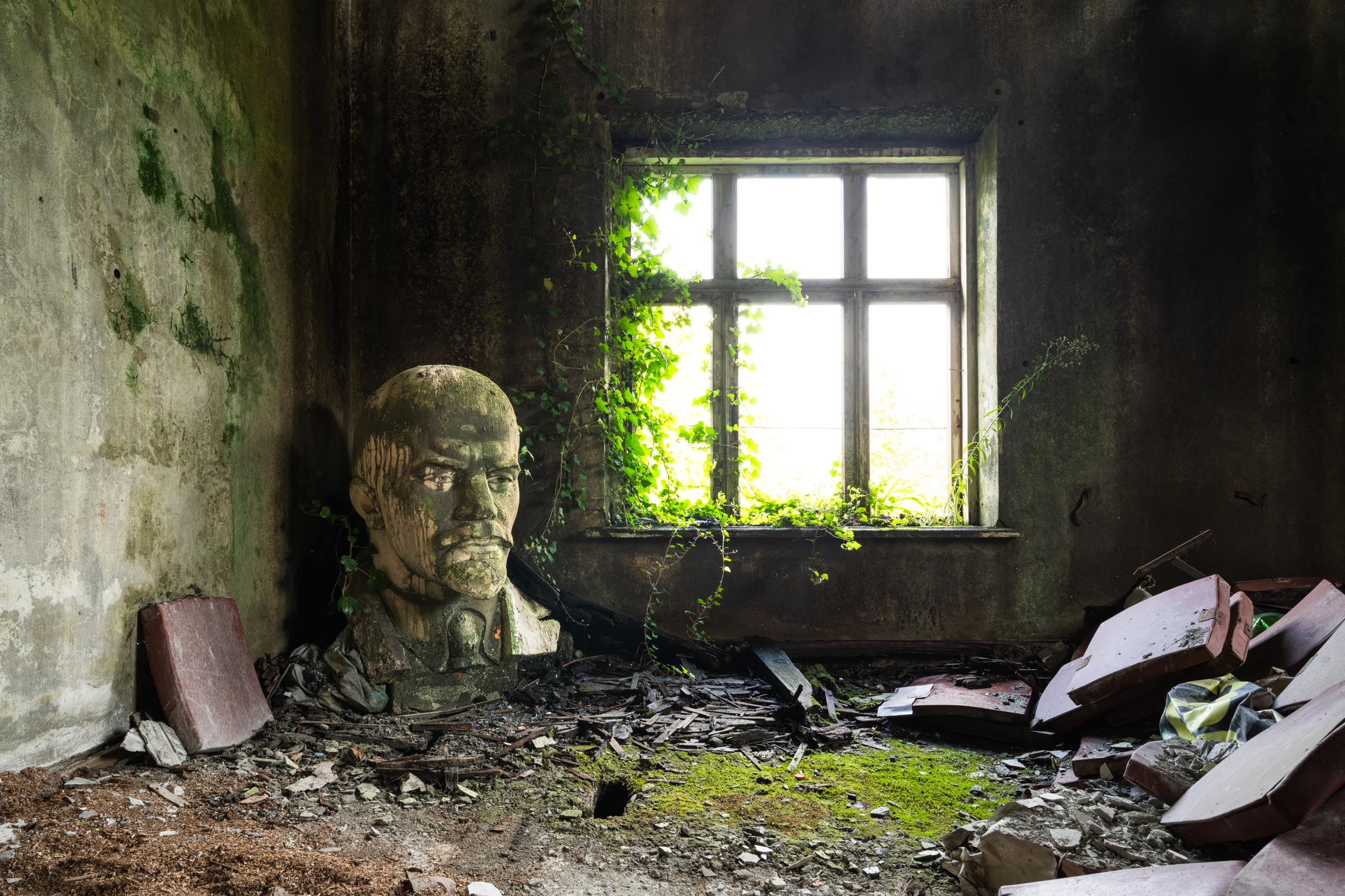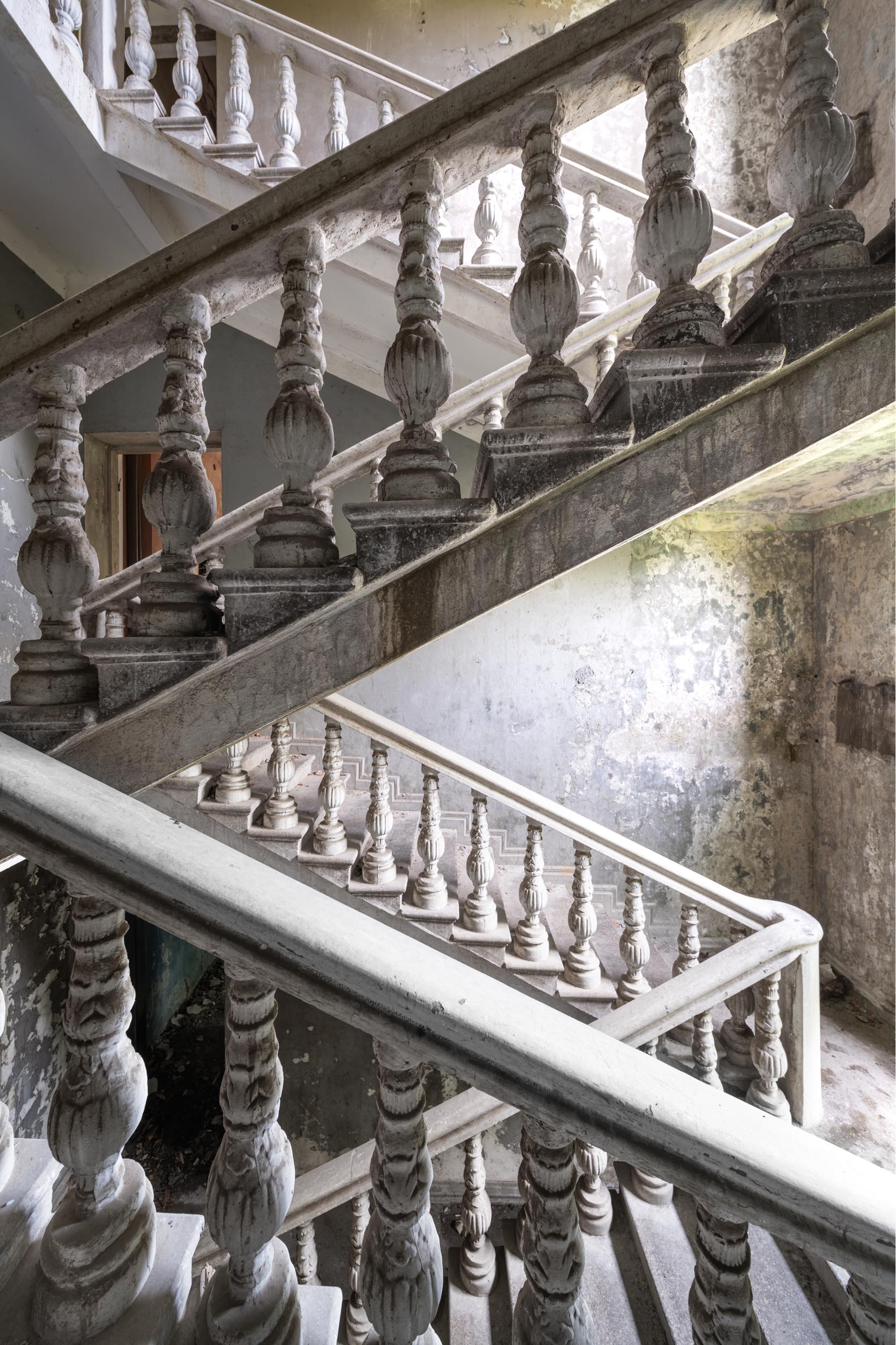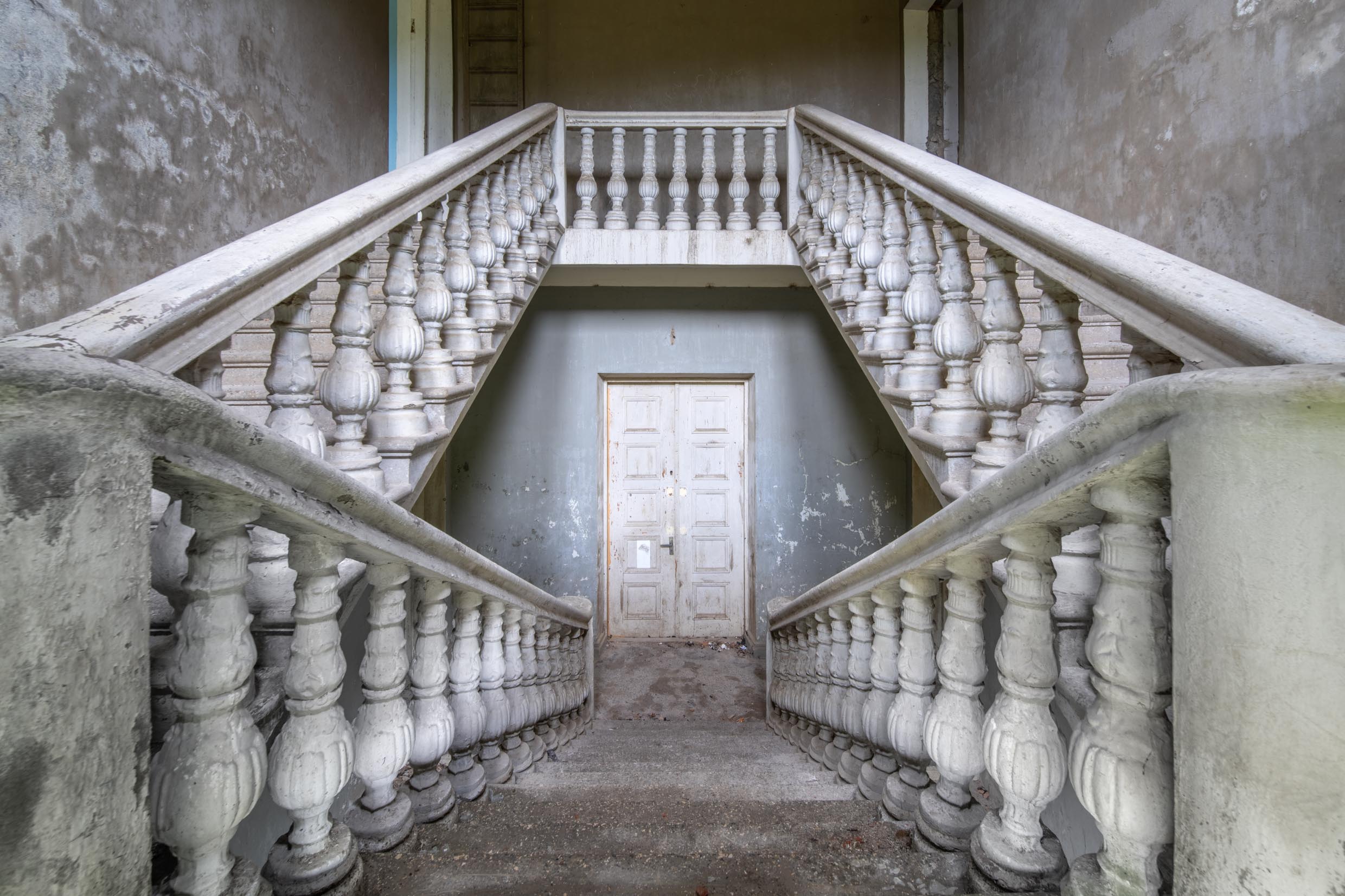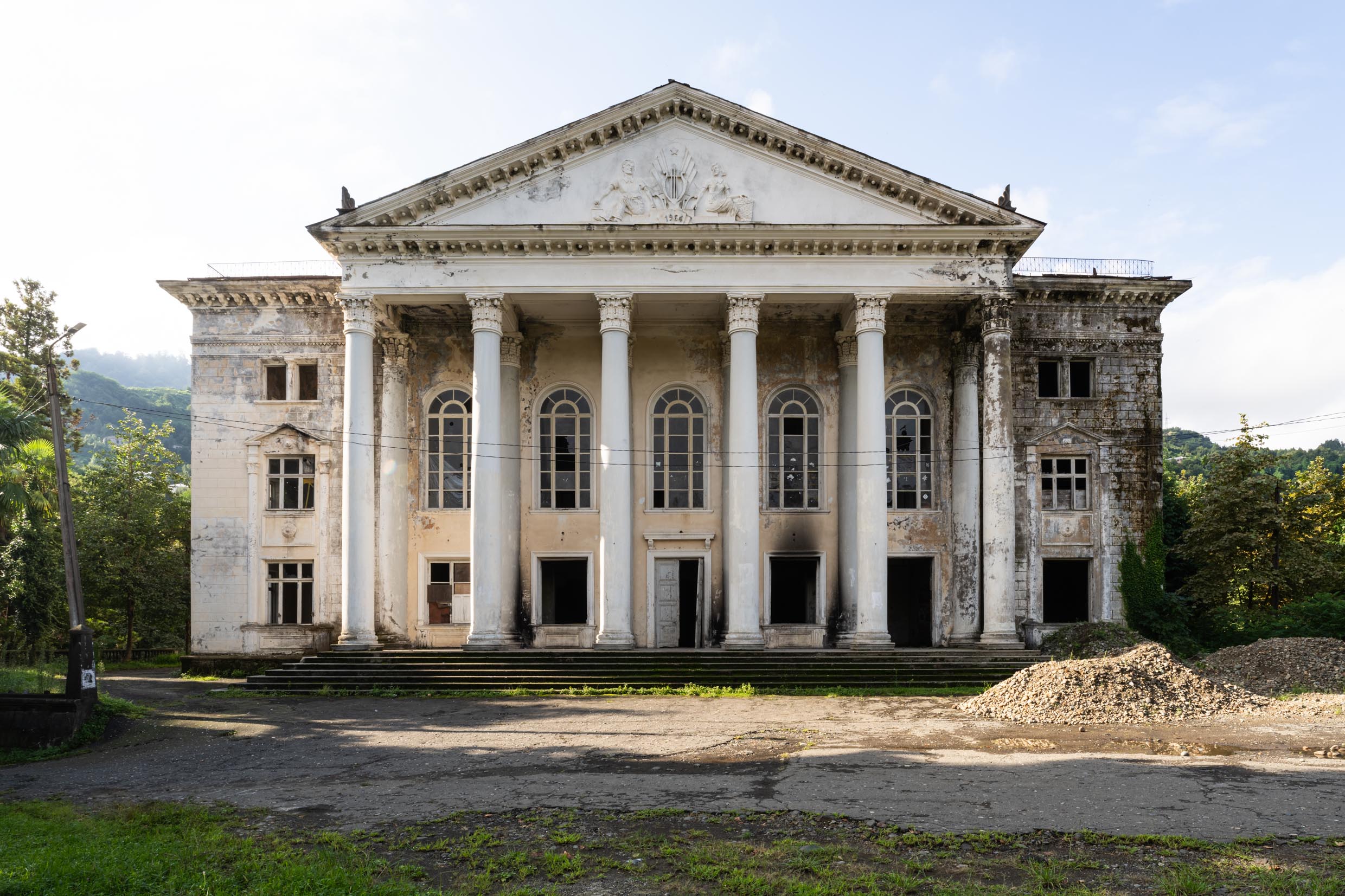The construction of this grand Georgian cultural house began in the early 1950s. It was designed by a Soviet architect and took over ten years to complete. Later on, a Greek architect made some noticeable changes to the design, drawing inspiration from the Acropolis buildings in Athens. The building's facade clearly reflects this influence, with its large pillars and triangular top.
Once finished, it became the largest cultural house in the area. People from nearby villages would come to watch plays and movies. However, after the Soviet Union fell in the early 1990s, the house was neglected and gradually fell into disrepair. Nowadays, I am genuinely concerned for this theater's future. The ceiling has significant water damage, and it won't be long before it collapses completely.






















